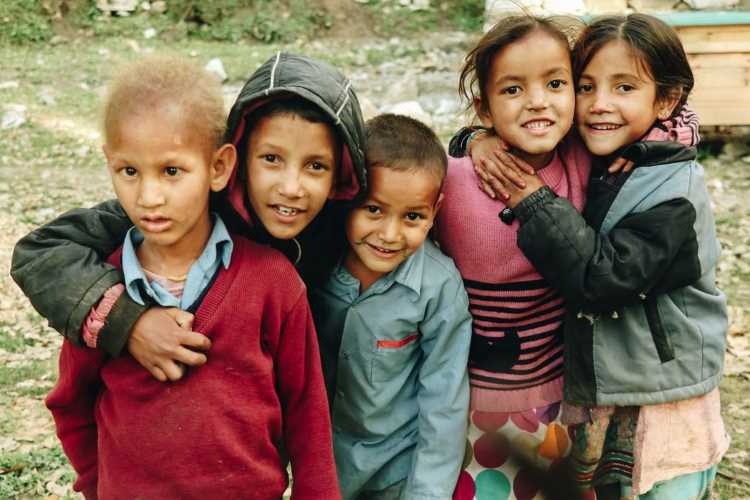
Poverty is a crime against humanity, but with the acquiescence of the society. The mankind has successfully lifted millions from one of the most punitive of human sufferings, with China and India leading the way. Yet, the efforts of nations have fallen short. Although global poverty has fallen, the overall decline in poverty for the rest of the world has been modest at best.
At least 10% of the world population is estimated to be suffering from abject poverty when measured using $1.90 threshold. It is a sobering realisation that with every 10 cents added to the poverty line, the global headcount of the poor increases by 100 million.1 According to World Bank estimates, globally there are about 4.2 billion people living on less than 5 dollars a day.
READ I Boon or bane? Universal basic income is not a poverty eradication tool
As the world faces the second wave of the Covid-19 pandemic that continues to dent economic growth prospects, a glaring consequence will be the hardships faced by households in developing economies in Asia Pacific region that rely heavily on remittances by migrant workers. An ADB report 2 estimates a fall in remittances in the range of $63.7 billion to $120.2 billion in the worst-case scenario. This could push millions of people into poverty. The World Bank estimates that around 89 million people will be pushed into extreme poverty in the second half of 2020.
As central banks inject liquidity to sustain business and stilt the economies, one glaring issue is the undoing of years of efforts in alleviating poverty. The world economy has incurred huge expenditures to contain this global ailment and it is still not known until how long will the billing continue. It is now worth reckoning, the possibility of concerted global efforts with even a fraction of the resources being spent now, to tackle poverty.
READ I Foolproof PDS: A practical guide to food security
Looking ahead, the nations would be better placed to address poverty if they move beyond mere good intentions and direct policy towards poverty action innovations that are fed by evidences of research. The issue of ending poverty can be looked at as a twofold approach:
- Lift people above the poverty line
- Sustain people’s station above it, ensuring mobility
While a host of poverty programmes exist, most interventions operate in silos — a cash handout here, a micro-credit programme there. Evidence suggests that such interventions bear little fruit and underutilise the potential to alleviate poverty. And when they do uplift, they don’t move the poor to a self-sufficient sustainability, but rather into an intermediate state of vulnerability.
READ I Make PDS more inclusive, give ration cards pan-India validity
Such programmes, pertaining to only one of the above-mentioned aspects make moving out of poverty precariousness and, it takes one extremity or misfortune for people to slip back into poverty. World Bank estimates that the current pandemic will push millions into extreme poverty, undoing all gains made since 2017.
It is crucial to view poverty from a nuanced lens, going beyond abject income poverty, considering other dimensions that address both the elements mentioned above. The innovations in poverty which are currently underutilised but have huge latent potential are comprehensive and community-oriented solutions.
READ I IMF chief calls for government spending in infrastructure to spur global recovery
Graduating out of poverty
An intensive multidimensional intervention designed to assist the destitute to move into sustainable livelihood, also known as the ‘graduation model’ augurs sanguine prospects. Recognising the complexity of poverty, it assists subjects in securing earning potential, social protection and financial literacy in an overarching development approach providing consumption stipend, skills training, some sort of seed capital to start a small business, financial literacy and inclusion, and regular consulting. These measures, intended as a time-limited initial assistance deployed over 18-24 months can push the poor out of a treacherous trap into a resilient trajectory of upward mobility.
Pioneered by BRAC, the results of studies have proven astonishingly successful with 95% of participants escaping poverty and continuing on an upward life standards trajectory even 4 years after the intervention. Professor Tony Sheldon of Yale cites researches affirming that in a “cost-benefit analysis, the significant upfront cost was more than made up for by the longer-term economic viability and reduction in subsidy for these households.” The graduation programme has been piloted in 33 countries and the randomised controlled trials’ results have been replicated with as 75-98% success rates, but till now it’s covered only 3 out of 700 million people in abject poverty.
READ I RCEP: Asia Pacific trade pact will amplify Chinese power
To tackle execution, community-oriented implementations kickstarted by governments would be essential enabling mediums to translate the research findings into scalable utilisations. Existing development policies would need coalescing and novel interventions under the program will require adaptation for different geographies and communities. Self-help groups, for instance, can better contextualise the assistance.
Such an innovation when utilised on adequately large scales by governments, would have positive externalities on social order down the line as it addresses long term issues of intergenerational poverty entrenchment. By facilitating a self-sustained and resilient movement out of poverty, this innovation can effectively eradicate and not merely alleviate poverty.
